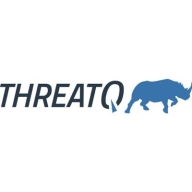

ThreatQ and Elastic Security are competing in the cybersecurity landscape. Elastic Security has the upper hand due to its superior features, which make it preferable for those who prioritize functionality.
Features: ThreatQ offers a threat intelligence platform for efficient threat management, integration capabilities enhancing security operations, and streamlined threat information sharing. Elastic Security provides robust analytics, advanced monitoring features, and strong detection and response capabilities. The main difference is ThreatQ’s focus on threat intelligence management versus Elastic Security’s comprehensive monitoring and analytics.
Ease of Deployment and Customer Service: ThreatQ offers a flexible deployment process with tailored customer service. Elastic Security simplifies setup with a cloud-centric approach, though it may require more technical expertise. ThreatQ is noted for its customization and support, while Elastic Security provides simplicity and scalability.
Pricing and ROI: ThreatQ is recognized for competitive setup costs, offering quicker ROI due to its focused threat management. Elastic Security might have higher initial costs but provides a comprehensive solution with analytics, delivering long-term value for businesses focusing on extensive security systems. The core difference lies in ThreatQ’s cost-effectiveness versus Elastic Security’s higher initial investment justified by its extensive security solutions.

Elastic Security combines the features of a security information and event management (SIEM) system with endpoint protection, allowing organizations to detect, investigate, and respond to threats in real time. This unified approach helps reduce complexity and improve the efficiency of security operations.
Additional offerings and benefits:
Finally, Elastic Security benefits from a global community of users who contribute to its threat intelligence, helping to enhance its detection capabilities. This collaborative approach ensures that the solution remains on the cutting edge of cybersecurity, with up-to-date information on the latest threats and vulnerabilities.
ThreatQ is a versatile threat intelligence platform designed for effective aggregation, analysis, and management of threat data. It streamlines threat information from multiple sources to enhance understanding and response capabilities.
ThreatQ supports incident response by correlating indicators of compromise and centralizing threat data in a single repository. This platform improves decision-making with its comprehensive threat landscape view and collaborative features. Its detailed analytics, customizable workflows, and scalability offer robust support for security teams. ThreatQ's integration with existing tools and powerful automation capabilities streamline threat detection and response processes. While some users point out the need for better integration and data visualization, ThreatQ remains a preferred choice for many due to its threat prioritization and reporting features.
What are the key features of ThreatQ?ThreatQ is implemented across various industries, providing valuable threat intelligence management in sectors like finance, healthcare, and government. These industries benefit from its incident response support, detailed analytics, and ability to centralize and prioritize significant threats, improving overall security posture.
We monitor all Security Orchestration Automation and Response (SOAR) reviews to prevent fraudulent reviews and keep review quality high. We do not post reviews by company employees or direct competitors. We validate each review for authenticity via cross-reference with LinkedIn, and personal follow-up with the reviewer when necessary.